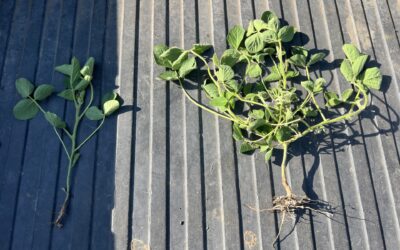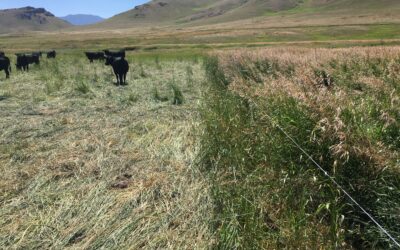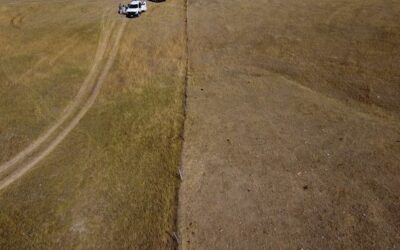Compaction
What is compaction?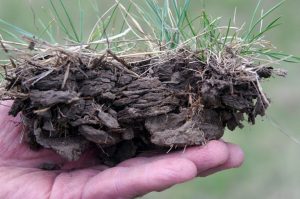
Soil compaction occurs when moist or wet soil aggregates are pressed together and the pore space between them is reduced. Compaction changes soil structure, reduces the size and continuity of pores, and increases soil density (bulk density). Wheel traffic or pressure (weight per unit area) exerted on the soil surface by large animals, vehicles, and people can cause soil compaction. In areas of rangeland, compacted soil layers are generally at the soil surface or less than 6 inches below the surface, although they can be as deep as 2 feet under heavily used tracks and roads. Increases in density can be small to large.
When is compaction a problem?
Compaction changes several structural characteristics and functions of the soil. It is a problem when the increased soil density and the decreased pore space limit water infiltration, percolation, and storage; plant growth; or nutrient cycling.
Water movement and storage.—Compaction reduces the capacity of the soil to hold water and the rate of water movement through soil. It limits water infiltration and causes increased runoff and, in some areas, increased erosion. Compacted wheel tracks or trails can concentrate runoff that can create rills or gullies, especially on steep slopes. When the amount of water that enters the soil is reduced, less water is available for plant growth and percolation to deep root zones.
Water entering the soil can perch on a subsurface compacted layer, saturating the soil to or near the surface or ponding on the surface. This water readily evaporates. Compaction can increase the water-holding capacity of sandy soils. An increase in the amount of water stored near the soil surface and a decrease in the amount of water deeper in the soil may favor the shallower rooted annuals over the deeper rooted plant species, such as shrubs.
Plant growth.—Where soil density increases significantly, it limits plant growth by physically restricting root growth. Severe compaction can limit roots to the upper soil layers, effectively cutting off access to the water and nutrients stored deeper in the soil. Anaerobic conditions (lack of oxygen) can develop in or above the compacted layer during wet periods, further limiting root growth. Even in arid climates, anaerobic conditions can occur where water accumulates.
Nutrient cycling.—Compaction alters soil moisture and temperature, which control microbial activity in the soil and the release of nutrients to plants. Anaerobic conditions increase the loss of soil nitrogen through microbial activity. Compaction changes the depth and pattern of root growth. This change affects the contributions of roots to soil organic matter and nutrients. Compaction compresses the soil, reducing the number of large pores. This reduction can restrict the habitat for the larger soil organisms that play a role in nutrient cycling and thus can reduce the number of these organisms.
How can compacted soil layers be identified?
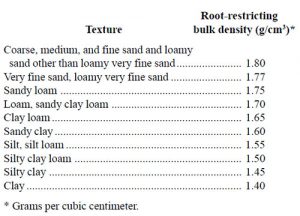 The following features may indicate a compacted soil layer:
The following features may indicate a compacted soil layer:
- platy, blocky, dense, or massive appearance;
- significant resistance to penetration with a metal rod;
- high bulk density; and
- restricted, flattened, turned, horizontal, or stubby plant roots.
Because some soils that are not compacted exhibit these features, refer to a soil survey report for information about the inherent characteristics of the soil. Each soil texture has a minimum bulk density (weight of soil divided by its volume) at which root-restricting conditions may occur, although the restriction also depends on the plant species.
What affects the ability of soil to resist compaction?
Moisture.—Dry soils are much more resistant to compaction than moist or wet soils. Soils that are wet for long periods, such as those on north-facing slopes and those on the lower parts of the landscape, where they receive runoff, are susceptible to compaction for longer periods than other soils. Saturated soils lose the strength to resist the deformation caused by trampling and wheeled traffic. They become fluid and turn into “mud” when compressed.
Texture.—Sandy loams, loams, and sandy clay loams are more easily compacted than other soils. Gravelly soils are less susceptible to compaction than nongravelly soils.
Soil structure.—Soils with well developed structure and high aggregate stability have greater strength to resist compression than other soils.
Plants and soil organic matter.—Near-surface roots, plant litter, and above-ground plant parts reduce the susceptibility to compaction by helping to cushion impacts. Vegetation also adds soil organic matter, which strengthens the soil, making it more resistant to compaction.
What breaks up a compacted layer?
Natural recovery is often slow, taking years to decades or more. Cycles of wetting and drying and of shrinking and swelling can break down compacted layers, especially in clays and clay loams. Deep compaction occurs in smaller areas than shallow compaction, but it persists longer because it is less affected by the soil expansion caused by freezing. Shallow compaction may be very persistent, however, in areas that are not subject to freezing and thawing.
Roots help to break up compacted layers by forcing their way between soil particles. Plants with large taproots are more effective at penetrating and loosening deep compacted layers, while shallow, fibrous root systems can break up compacted layers near the surface. Roots also reduce compaction by providing food that increases the activity of soil organisms. Large soil organisms, such as earthworms, ants, and termites, move soil particles as they burrow through the soil. Small mammals that tunnel through and mix the soil also are important in some plant communities.
Management strategies that minimize compaction
- Minimize grazing, recreational use, and vehicular traffic when the soils are wet.
- Use only designated trails or roads; reduce the number of trips.
- Do not harvest hay when the soils are wet.
- Maintain or increase the content of organic matter in the soil by improving the plant cover and plant production.
This Page Was Created Utilizing Text And Images From These Sources:
South Dakota Resource Concerns Webpage, South Dakota Natural Resources Conservation Service
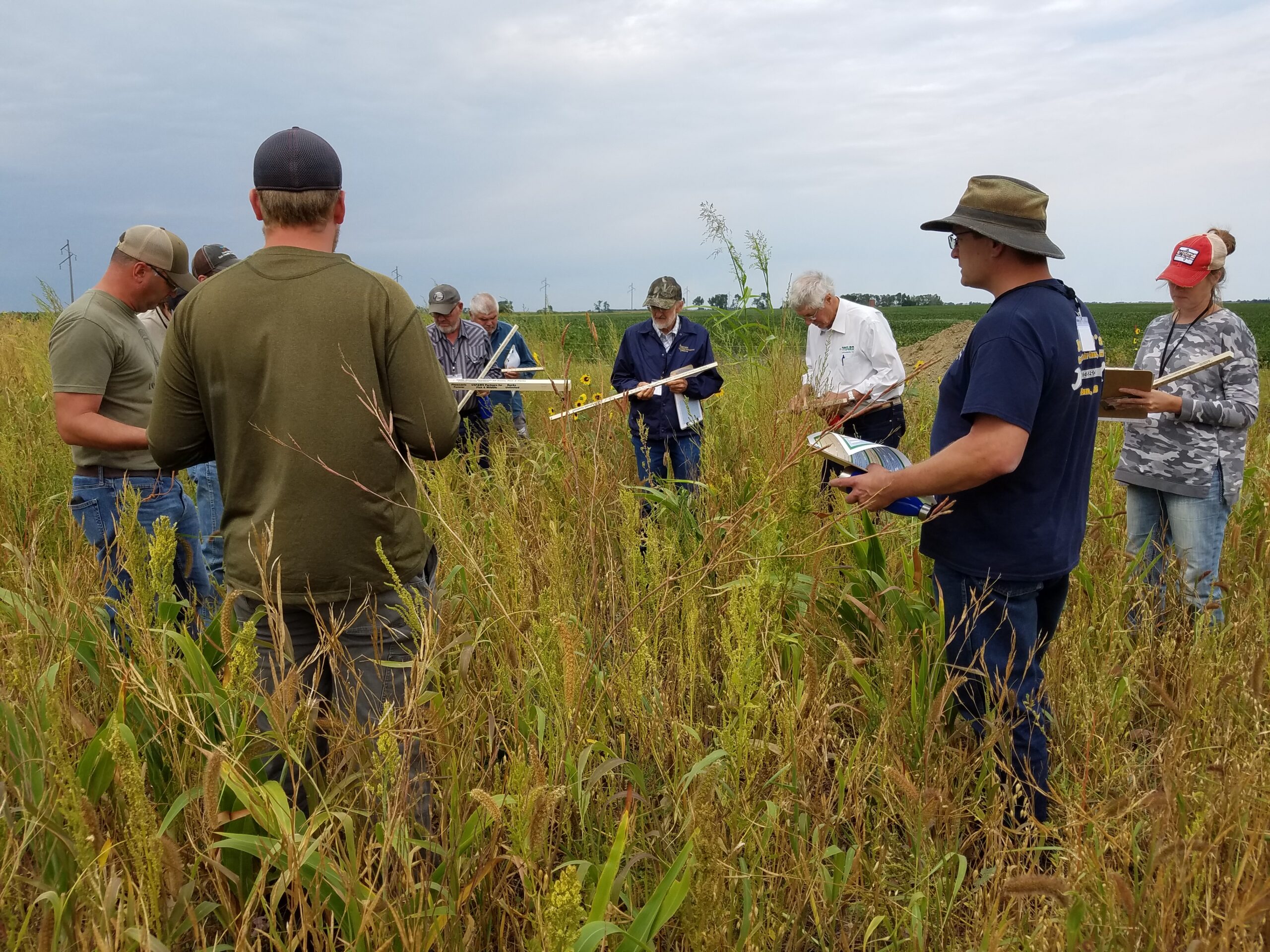
West River Soil Health School Registration Open!
In 2024, the South Dakota Soil Health Coalition will host an additional Soil Health School in west of the Missouri River! The 2024 West River Soil Health School with be held June 26-27 near Caputa, SD! This school will focus on issues specific to the land, climate, and ag production systems of wester South Dakota. Class size is limited, so early registration is strongly encouraged!
News & Events
Farmer reaps higher yields by interseeding soybeans
By Stan Wise Alex Frasier has spent a lot of time studying what it takes to grow a successful crop. After studying ag production and precision technology at Lake Area Technical College, he has worked in ag retail and currently works as an agronomist in Aberdeen, SD....
Farm and ranch innovators to share new ideas at Soil Health Conference
By Stan Wise PIERRE, SD — Before Cooper Hibbard came home to manage his family’s ranch, he studied ag business, rangeland resources and Spanish at California Polytechnic State University and then worked on ranches all over the world. That education and experience...
Wintertime is decision time
By Stan Wise PIERRE, SD – It’s often said that the best time to start improving your land was 20 years ago, but the second-best time is right now. That statement might be harder for ranchers to swallow with winter on their doorstep, nothing growing in their pastures,...
